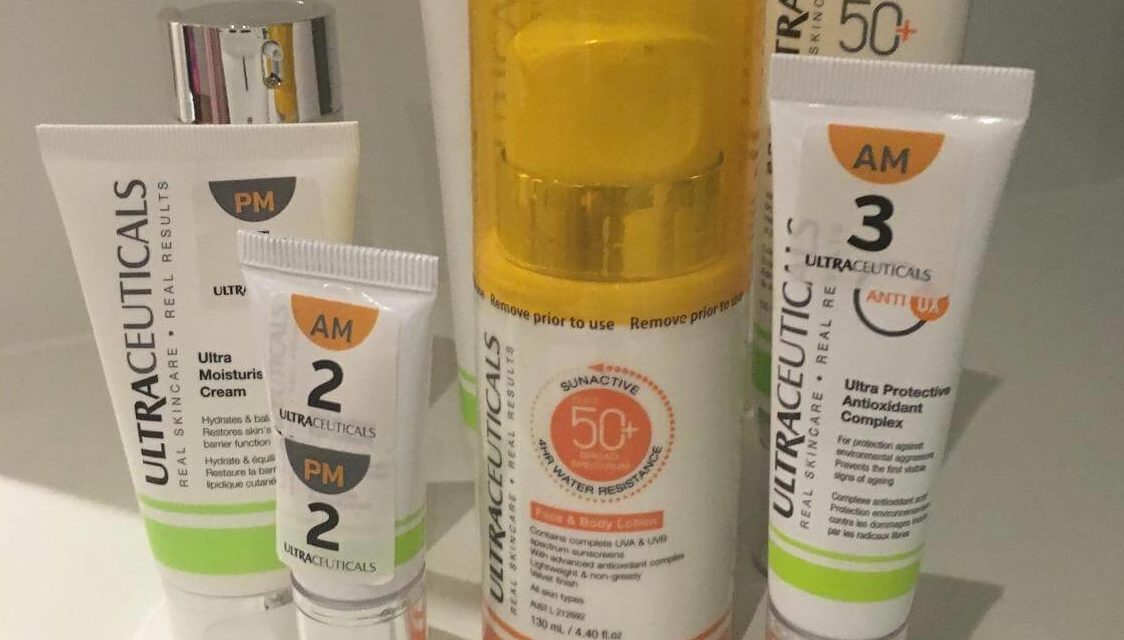As I’ve gotten older my skin has progressively dried up to the point of being quite scaly in places. Not a good look! Over the years I’ve used Skinstitut products and these probably have stood me in good stead but I thought it might be time to get the big guns out.
So, I went off for a consult with Tracey Beeby at Ultraceuticals and to find out the best way for treating aging skin. I like the fact that Ultraceuticals is founded by a doctor who has been running skin clinics for years. Geoff Heber is the founder of Ultraceuticals and he’s meticulous in how he produces his skin care products; all the products are ‘evidence based’. This means that there is less hype and a great deal of scientific rigor when it comes to their production and they use latest research to inform their production process.
Here’s the video interview with Tracey Beeby:
Skin assessment is the first step when treating aging skin
Tracey Beeby is the national training manager for the company and I was lucky enough to get a personal assessment and have her map out a skin treatment plan. Tracey outlined the importance of doing things the right way which saw me completing a detailed questionnaire. It is vitally important to get an understanding of our skin’s baseline situation as otherwise we’ll not know if we are getting results. The questionnaire uncovered things like my Fitzpatrick skin type, any allergies, medications being ingested and the like. The Fitzpatrick skin classification is a way to classify our skin color and this is important to know as it can be unsafe to do more intensive types of treatments such as certain lasers and peels on darker skins.
There are risks associated with treating aging skin
Dark skins have more pigment and the more pigment that we have in our skin, the more prone we are to developing hyperpigmentation. And we may even develop some hypopigmentation which is where we lose the pigment altogether. I’m fair skinned and have a Skin Type 1 classification which is very easy to treat. I always cursed the fact that I had the red haired/freckled gene and consciously bred it out of my family by marrying a dark person, but perhaps this will work in my favor from now on?!
Imaging technology for skin assessment prior to treating aging skin
As a standard practice, Ultraceuticals use an imaging system which is essentially an exotic camera that takes a frontal plus two side views of the facial skin.
It not only takes an image of the skin superficially, but it can also photograph what is happening beneath the surface. It picks up any underlying redness, problem pores, congestion, skin texture damage, dead skin build up, dehydration and other areas that might be of concern. When it comes to getting a good skin practitioner, make sure you ask how they are treating aging skin. One size certainly doesn’t fit all with many things and this is certainly applicable to the skin. Also, how will you know whether those excruciatingly expensive products are working if you don’t have factual information in front of you? It is very easy to get carried away with the hype of skin care advertising but as we age, we don’t have time to make costly mistakes and a detailed assessment is one way to avoid spending needlessly.
Basics for any program for treating aging skin
Even though one size won’t fit all, there are some basics that should suit most skins and which have good evidence when it comes to treating aging skin. There is now unequivocal scientific evidence that the regular application of cosmeceuticals, including retinoids, antioxidants, emollients, peptides, vitamins, hormones, phytochemicals and many other active agents, improve skin’s appearance and/or prevent its deterioration.
Retinoids for treating aging skin
One of the staples is a retinoid which is a relative of vitamin A. The best-known retinoid is tretinoin (AKA trans-retinoic acid) and other forms include retinol, retinal, retinoic acid and retinol palmitate. Retinoic acid is naturally present in our skin. All retinoids, natural and synthetic, either have a retinoic acid element as part of their chemical structure or get converted into retinoic acid by our skin’s chemical processes. Retinoic acid repairs the skin by binding to specific receptors and this sets off a chain of chemical signals that leads to the formation of new matrix and a coordinated reduction in pathways that contribute to matrix loss. This slowly stretches the skin and fills out fine wrinkles and lines (in a similar fashion to fillers).
Other important nutrients for the skin include Vitamin C and other antioxidants. Lastly, never forget your sunscreen (particularly on the neck and chest which is where we start to show signs of damage very quickly as we age).
Tracey’s prescription treating skin aging was:
Ultra A Perfecting Eye Cream.
This is a lovely light eye cream and a little goes a long way.
Ultra Protective Antioxidant Complex. Great product and contains antioxidants including Chaparral, Silymarin, Provitamin C, Vitamin E and Ferulic Acid.
Ultra Moisturiser Cream. Gorgeous and light moisturizer containing Ceramide-3, Linoleic Acid, Linolenic Acid and Cholesterol. Also Sodium PCA, Urea and Sodium Hyaluronate and Vitamin E.
Ultra UV Protective Daily Moisturiser SPF 30 Hydrating. I absolutely love this product; it’s light and not greasy and easy to put on the skin.
SunActive SPF 50+ Face & Body Lotion. This product stays the distance if you are into outdoor activities. It’s quiet heavy and sticky, but even so, I feel like I’m wearing a quality product that won’t let me down.
Ultra A Skin Perfecting Serum. Love this product and apparently contains a high level of Ulraceutical’s Ultra-RETITM pure retinol Microparticles delivered by an advanced retinol delivery technology. It also contains Pro-Vitamin C and the enzyme Bromelain.






